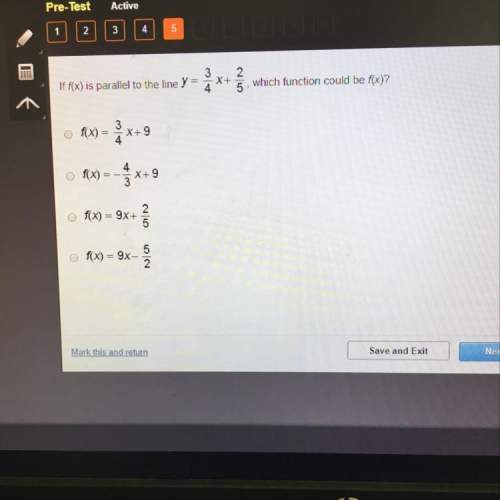
Mathematics, 30.03.2020 17:41 arias58
A new weight-watching company, Weight Reducers International, advertises that those who join will lose, on average, 10 pounds the first two weeks with a standard deviation of 2.8 pounds. A random sample of 50 people who joined the new weight reduction program revealed the average weight lost to be 9 pounds. At the 0.05 significance level, can we conclude that those who join Weight Reducers on average will lose less than 10 pounds? A new weight-watching company, Weight Reducers International, advertises that those who join will lose, on average, 10 pounds the first two weeks with a standard deviation of 2.8 pounds. A random sample of 50 people who joined the new weight reduction program revealed the average weight lost to be 9 pounds. At the 0.05 significance level, can we conclude that those who join Weight Reducers on average will lose less than 10 pounds?

Answers: 1


Another question on Mathematics

Mathematics, 21.06.2019 15:00
Ascatterplot is produced to compare the size of a school building to the number of students at that school who play an instrument. there are 12 data points, each representing a different school. the points are widely dispersed on the scatterplot without a pattern of grouping. which statement could be true
Answers: 1

Mathematics, 21.06.2019 17:30
For each proportion find the unknown number x 1/5/8=×/15
Answers: 1

Mathematics, 21.06.2019 21:40
Write the contrapositive of the conditional statement. determine whether the contrapositive is true or false. if it is false, find a counterexample. a converse statement is formed by exchanging the hypothesis and conclusion of the conditional. a) a non-converse statement is not formed by exchanging the hypothesis and conclusion of the conditional. true b) a statement not formed by exchanging the hypothesis and conclusion of the conditional is a converse statement. false; an inverse statement is not formed by exchanging the hypothesis and conclusion of the conditional. c) a non-converse statement is formed by exchanging the hypothesis and conclusion of the conditional. false; an inverse statement is formed by negating both the hypothesis and conclusion of the conditional. d) a statement not formed by exchanging the hypothesis and conclusion of the conditional is not a converse statement. true
Answers: 1

Mathematics, 21.06.2019 22:00
If tan2a=cot(a+60), find the value of a, where 2a is an acute angle
Answers: 1
You know the right answer?
A new weight-watching company, Weight Reducers International, advertises that those who join will lo...
Questions

Mathematics, 24.01.2020 01:31

Biology, 24.01.2020 01:31



Health, 24.01.2020 01:31

Mathematics, 24.01.2020 01:31

History, 24.01.2020 01:31

Social Studies, 24.01.2020 01:31




History, 24.01.2020 01:31






Mathematics, 24.01.2020 01:31

Mathematics, 24.01.2020 01:31





